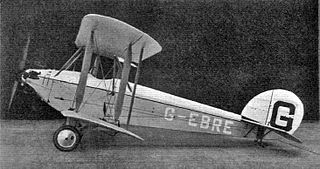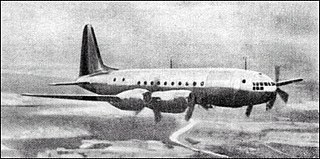
The Yakovlev UT-2 was a single-engine tandem two-seat low-wing monoplane that was the standard Soviet trainer during the Great Patriotic War. It was used by the Soviet Air Force from 1937 until replaced by the Yakovlev Yak-18 during the 1950s.

The Yakovlev Yak-12 is a light multirole STOL aircraft used by the Soviet Air Force, Soviet civilian aviation and other countries from 1947 onwards.

The Blackburn L.1 Bluebird was a British single-engine biplane light trainer/tourer with side-by-side seating, built in small numbers by Blackburn Aircraft in the 1920s.

The de Havilland DH.71 Tiger Moth was a British single-seat monoplane, designed to research high-speed flight and to test replacement engines for the Cirrus. Only two were built.

The Dornier Libelle, also designated Do A, was a German open-cockpit, all-metal, parasol wing, monoplane flying boat aircraft, with partly fabric-covered wings. A landplane version, built without sponsons and fitted with a fixed tailwheel undercarriage was produced as the Dornier Spatz.

The Loening OL, also known as the Loening Amphibian, was an American two-seat amphibious biplane designed by Grover Loening and built by Loening for the United States Army Air Corps and the United States Navy.

The Fleet 50 Freighter was a Canadian twin-engine biplane general utility aircraft designed and built by Fleet Aircraft. This peculiar-looking aircraft had promise as a freighter and general use aircraft, but it was underpowered and only five were built.

The Short Type 827 was a 1910s British two-seat reconnaissance floatplane. It was also known as the Short Admiralty Type 827.

The Westland Widgeon was a British light aircraft of the 1920s. A single-engined parasol monoplane, the Widgeon was built in small numbers before Westland abandoned production in 1929.

The Potez 36 was a French two-seat touring or sport monoplane designed and built by Potez. The Potez 36 was a high-wing braced monoplane with a conventional landing gear. It had an enclosed cabin with side-by-side seating for a pilot and passenger. The design had some unusual features like folding wings to make it easier to store or to tow behind a motor car. Some of the aircraft had Potez-designed leading-edge slats. The aircraft was popular with both French private owners and flying clubs with a small number being used by the French Air Force during the 1930s as liaison aircraft.

The BFW M.23, sometimes known as the Messerschmitt M 23, was a 1920s two-seat sporting aircraft designed by Willy Messerschmitt, and produced by Bayerische Flugzeugwerke (BFW). Examples won several prestigious races in 1929 and 1930.

The Ilyushin Il-18 was a Soviet four-engined airliner designed and built by Ilyushin immediately after World War II. Although the aircraft itself was successful, its Shvetsov ASh-73TK engines were too unreliable for civilian use and were further needed to equip the Tupolev Tu-4 bomber, so it was cancelled in 1948.

The Dietrich DP.II Bussard was a 1920s German two-seat training biplane designed by Richard Dietrich and built by the Dietrich-Gobiet Flugzeugwerke as Kassel.
The Yakovlev Yak-10 was a Soviet light liaison aircraft designed and built by the Yakovlev design bureau in the 1940s.

The Mitsubishi MC-1 was a 1920s Japanese single-engined biplane airliner designed and built by the Mitsubishi Aircraft Company.

The Yakovlev AIR-3 was a 1920s Soviet two-seat general aviation monoplane designed and built by Aleksandr Sergeyevich Yakovlev.
The Yakovlev AIR-6 was a Soviet light utility aircraft of the 1930s. It was a single-engined high-wing monoplane designed by Alexander Sergeyevich Yakovlev, with 128 being built.

The Yakovlev AIR-7 was a prototype Soviet high performance light aircraft of the 1930s. It was a two-seat single-engined monoplane, which demonstrated excellent performance during testing. After the prototype almost crashed as a result of flutter, its designer, Alexander Sergeyevich Yakovlev suffered temporary disgrace and no production followed.

The Yakovlev AIR-5 was a prototype Soviet single-engined cabin monoplane designed by the Yakovlev design bureau. The AIR-5 was a high-wing strut-braced monoplane with a 200 hp (149 kW) Wright J-4 Whirlwind engine. It had a tubular steel fuselage, wooden wings and an enclosed cabin for a pilot and three passengers.
The Yakovlev AIR-12 was a long-range sport aircraft designed and built in the Soviet Union during the late 1930s.


















